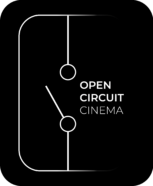Explorations in how deep futures form our present,
through awareness of kinship with the earth and other non-human agents.
Reflecting and building on time’s material relations and the spectres that haunt it.
Dust Cycles, Eva Kolcze, 2017, 12’31”
‘Dust Cycles’ uses 16mm film and aerial video to explore the Scarborough Bluffs, a string of cliffs located at the eastern edge of Toronto’s waterfront where natural and human made elements collide.
‘Dust Cycles’ investigates the past and present of the Bluffs, from the rock and clay strata that reveal the last Ice Age to the present day properties on the brink of destruction due to erosion.
Sasha Litvintseva & Graeme Arnfield, Asbestos, 2016, 19’30”
Mined, extracted, and woven, asbestos was the magic mineral. Towns became cities under its patronage, Persian kings entertained guests with its fireproof nature, and centuries of industry raked in the profits of its global application. We now live in the remains of this toxic dream, a dream that with the invention of electron microscopes revealed our material history as a disaster in waiting. Yet the asbestos industry has far from left us with extraction from the soil transforming to extraction from our walls. We are now faced with two options: to remove this material from our homes and start anew, or to build upon its residue. Removal is a dangerous and costly operation. So often we choose to live amongst it instead, choking out our walls with plastic tarping: the failed promises of modernism literally entombed all around us. Shot in the mining town of Asbestos,Quebec, home to the world’s largest asbestos mine that only stopped extraction in 2012, the film is a meditation on the entanglement of the fragility of bodies, the nonlinearity of progress, and the persistence of matter.
Wayward Fronds references a series of historical events that helped shape the Florida Everglades today, while fictionalizing its geological future and its effects on both native and exotic inhabitants. Guided by recent talks in the Florida legislature to finally disburse billions of dollars in restoration funds, events in this film unfold by giving way to a future eco-flourished Everglades. Nature begins to take over, en-gulfs and tames civilization after centuries of attack, and even guides it into its mysterious aqueous depths, forcing humans to adapt and evolve to its surroundings.
Arrábida, Tinne Zenner, 2017, 15’50”
Arrábida is a 16mm film centred on the production of landscape and concrete in the Arrábida Natural Park. It merges footage from the park with 3D animation of the topographic landscape as an equal analogue layer.
Arrábida Natural Park is placed south of Lisbon, Portugal. Covering a vast area of coast, caves, mountains and forest, the park is inhabited by a massive factory that branches through the landscape via chutes and shuttle systems over and under ground to transport the porous material from the quarries to the factory, then to the shipping harbour. There is a constant movement of material through the park. Documenting the various layers of the sourced material, the factory body and the constructed landscape, the film looks at how time is physically embedded in the matter and how the molecular particles act in a circular re-shaping of the whole.
The 3D animation is built from height data of the specific landscape and animated with particle systems (large systems of small units that can simulate ephemeral matters such as explosions, water, fog, dust, etc.). The animated landscape is established from particles into a whole and dissolved from the molar to the molecular respectively. While mapping the earth, the 3D animation acts as a guiding layer of camera paths through the landscape.
Há só uma terra. There is only one earth
